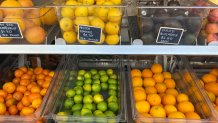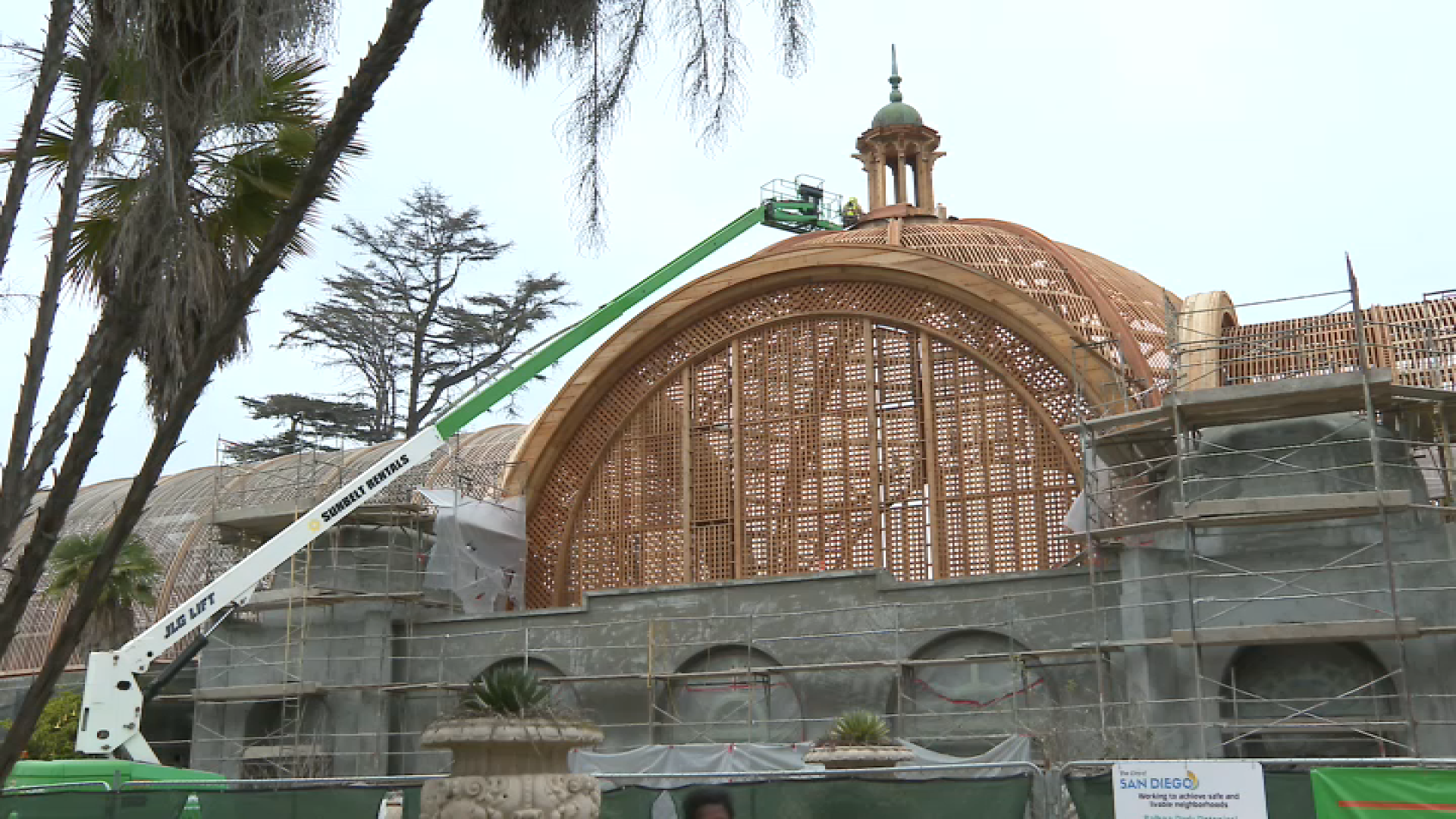Project New Village, a nonprofit and grassroots movement, is bringing a mobile farmers market to National City, San Diego and Lemon Grove to help feed community members experiencing food insecurity or limited access to healthy food.
According to the California Freshworks Food Access Report in 2016, nearly, “1 million Californians, 45% billion of whom are low-income, live without access to nearby supermarkets or large grocery stores in communities known as 'food deserts.'"
Although the term “food desert” is commonly used, Amanda McClain, San Diego State Assistant Professor of Nutrition and Project New Village advisory board member, said that the term fails to encapsulate the history behind food insecurity – racism and marginalization – and to account for non-traditional venues in communities that may have food like corner stores, gas stations and gardens. Instead, McClain said she prefers the terms food apartheid and food sovereignty.
The term food apartheid describes a system “of segregation that divides those with access to an abundance of nutritious food and those who have been denied that access due to systemic injustice,” according to Regeneration.org. Food sovereignty, on the other hand, allows people to produce culturally appropriate food in sustainable ways and it highlights the community’s needs rather than the needs of corporations, per the U.S. Food Sovereignty Alliance.
Get San Diego local news, weather forecasts, sports and lifestyle stories to your inbox. Sign up for NBC San Diego newsletters.
The mission of Project New Village is to serve what it calls the Good Food District.
“The Good Food District is a place-making approach which builds upon the assets within the community of Southeast San Diego: vacant lots, food entrepreneurs, residents and other partners,” according to the Project New Village website. “The Good Food District will enhance urban agriculture’s connection to economic opportunity by changing the relationship between how people sell and source their food.”

Within the Mount Hope neighborhood, which is covered in orange, is a community garden run by Project New Village.

The Mount Hope Community Garden opened in 2011 and is made up of 40 garden beds for community members to grow in and harvest from.
In Your Neighborhood
NBC7 goes in your neighborhood
Griselda Luna, a San Diego State University student, volunteers with Project New Village
“That garden is just like paradise to me,” Luna said.
Food insecurity in nearby communities is no coincidence, said McClain.
“The reason that Southeastern San Diego has such a high rate of poverty and chronic disease is because of the history of being cut off from resources that promote health and well-being,” McClain said.
Project New Village’s efforts don’t stop at the garden. In October 2022, it launched a new venture: a mobile farmers market called People's Produce. The refrigerated truck carries produce from the Mount Hope Community Garden and local California farmers to five different sites within the Good Food District.
The truck is in full swing from Wednesdays, when it sets up shop in San Diego to Tuesdays when the operators give away any of the week’s leftovers for free.

The managing director of Project New Village operations, Diane Moss, said her community is at a loss for nutritional and approximate resources.
“There are not many places where you can go and get organic local produce in our neighborhood,” Moss said during a recent interview.
Many people find the garden and mobile farmers market truck simply by passing through the neighborhood.
“I was just walking by the Mount Hope location one day and they were there,” said Joseph Story, who's now a regular visitor of the market.
The Mount Hope Community Garden has also become a hub for the community, Moss said.
“I am very happy to see a lot of seniors,” Moss said. “They can actually walk to the market.… what we’re seeing is a lot of senior couples are just fitting it into their day. They’re walking their dog or whatever, and they stop into the garden.”
The produce is fresh and high quality, said Rodney West, manager of Project New Village who's also a master gardener.
“We have some produce that was just picked yesterday,” West said. “We have some that was picked this morning. We keep things local. We buy from local farmers, or we do what we call hyperlocal: We grow it right in our communities or coming from our neighboring community gardens.”

Resourcing from local farmers allows for lower prices and a greener, smaller carbon footprint, West said. Stehly Farms Organics, Sage Mountain Farm and San Gabriel Ranch are some of the other sources for the project.
Project New Village sells its produce for approximately 20% on top of what the farmers charge it, Moss said.
Many visitors never even touch their wallets, though: Project New Village was the recipient of the Achieving Health Literacy grant, which is administered through the University of California San Diego's Center for Community Health and provides funding that Project New Village then hands out as $10 vouchers in exchange for participation in a brief nutrition education session and survey.
The survey, offered in English and Spanish, is administered by McClain’s Community Nutrition students at SDSU. It covers topics ranging from health to shopping habits, demographic information and transportation.
The survey serves two functions, according to McClain. First, it provides the required information to the funders and, second, it helps Project New Village to improve its services and to examine their impact.
The mission behind the involvement of university students, McClain told NBC 7, is hands-on involvement in the communities they're studying.
“I think it is fundamental to universities embedded in communities that they are directly involved with their communities in positive ways,” McClain said. “I think that's part of the purpose is not to be in our ivory towers all the time, that we need to actually be exchanging resources with our communities.”
McClain’s students also hand out educational materials, including cooking guides, recipes and information on the produce.

Project New Village recently received approval to employ CalFresh EBT for purchases from the farmer’s market truck. EBT is "an electronic system that allows a Supplemental Nutrition Assistance Program (SNAP) participant to pay for food using SNAP benefits," according to the U.S. Department of Agriculture.
The market is not just about the food people buy; it also addresses the psychological effects of food insecurity.
“Being food insecure or being at risk of being food insecure is stressful — it's incredibly stressful,” McClain said. “There's this aspect of knowing that you have consistent access to the foods that you want to be eating and that you feel you need to be eating for your health…there’s a potential there that we are mitigating the stress of that.”
West said the garden and mobile farmers market serve a more holistic purpose.
“This is our pharmacy, so we want this to be a pharmacy rather than having to go to the medical building,” West said.
Plans are also underway for the People’s Produce mobile food truck to expand its services, this time, to a custom grocery store, which would be operated at Mount Hope Community Garden, and restaurants, which would be funded by a grant of $1 million from the Alliance Healthcare Foundation grant. Organizers will need to find supplemental funding for those plans to come to fruition; organizers hope to open the doors in 2025.
All of these efforts, McClain said, operate in a foundational belief that communities are routinely cut off from resources.
“It's really incredible what Ms. Moss and Project New Village have done and are continuing to do to really empower that community and hopefully change and inform policies that prevent future marginalization,” McClain said.
For more information on Project New Village, you can visit their website here.



